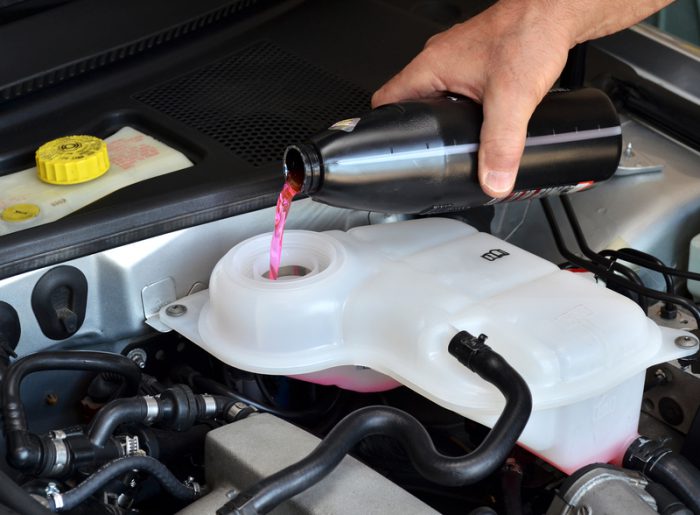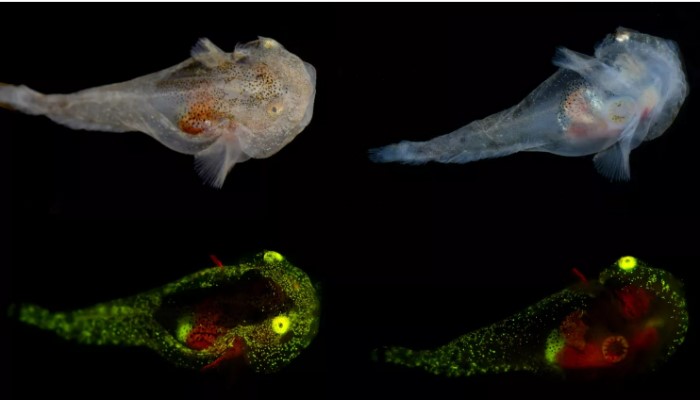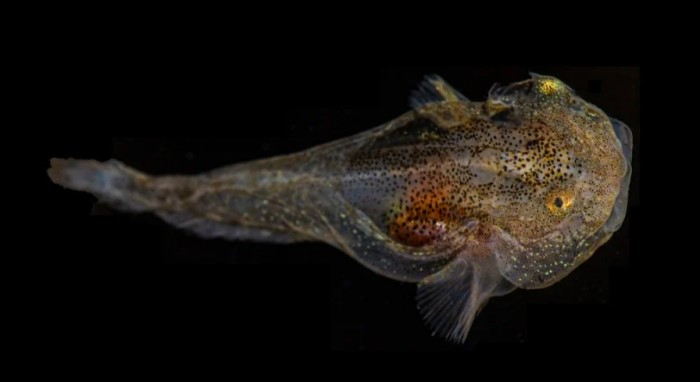The waters in Arctic can get cold. As in below freezing cold.
Much of the water in this part of the ocean can stay a liquid because it has lots of salt and flowing of ocean currents. But the water near icebergs and the ice shelf, it is a potentially deadly environment for fish.
If a fish's bodily fluid freezes, it cannot survive. So you can imagine the surprise of a group of researchers who drilled into an iceberg near Greenland only to find a tiny fish alive and swimming in the water inside!
How? This unfreezable fish is full of antifreeze! The juvenile variegated snailfish, a creature that is barely the size of a thumbnail, has been found to have the highest percentage of natural antifreeze in its body of any animal known.
The fish also can glow, too. How about that for special talents?
What is animal antifreeze?

Antifreeze is used in a car's engine to allow it to work during winter. This fish using a similar idea, but relies on proteins in its blood that target ice crystals. (ID 49803112 © Ensuper | Dreamstime.com)
The word 'antifreeze' seems self explanatory. It is anti, or against, freezing. But what does it do, exactly?
Artificial antifreeze is common in cars as a way to prevent fluids from freezing solid inside engines. It is a fluid that has a much lower freezing point than water. It is pumped around an engine and helps to carry the warmth of that running engine around other parts of the car that need to resist the super cold temperatures.
But the natural antifreeze in these fish works a little differently.
Instead, the fish's body makes antifreeze proteins. These are molecular chains that attach themselves to tiny ice crystals and essentially stop them from growing into larger ice crystals.
The type of ice crystals that could spread across the animal and freeze it solid!
According to David Gruber, a researcher at the American Museum of Natural History who helped write the study, the snailfish's body produces these proteins "and then excretes them into their bloodstream." What an incredible adaption!
They also glow!

This images show how the snailfish can glow under certain light. (John Sparks and David Gruber)
Being an unfreezable fish would be amazing enough on its own. But these snailfish upped their game even further by being able to glow as well!
Their trait is that they are able to use biofluorescence. This means that they can absorb blue (normal day) light energy, and turn it into red, green, and yellow glowing light.
This adaptation is relatively common among fish in warmer waters, but much rarer among polar water species. In fact, this is the first Arctic fish known to do it!
Exactly why this tiny fish that swims among icebergs would also need to glow is unclear. But one thing that is clear is that when it comes to nature, big surprises can come in tiny packages!
 It looks a little like a tadpole, but the variegated snailfish is quite surprising. (John Sparks and David Gruber)
It looks a little like a tadpole, but the variegated snailfish is quite surprising. (John Sparks and David Gruber)









